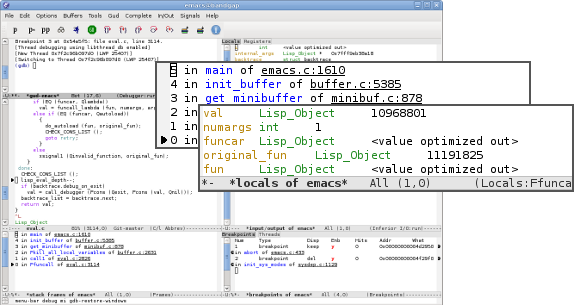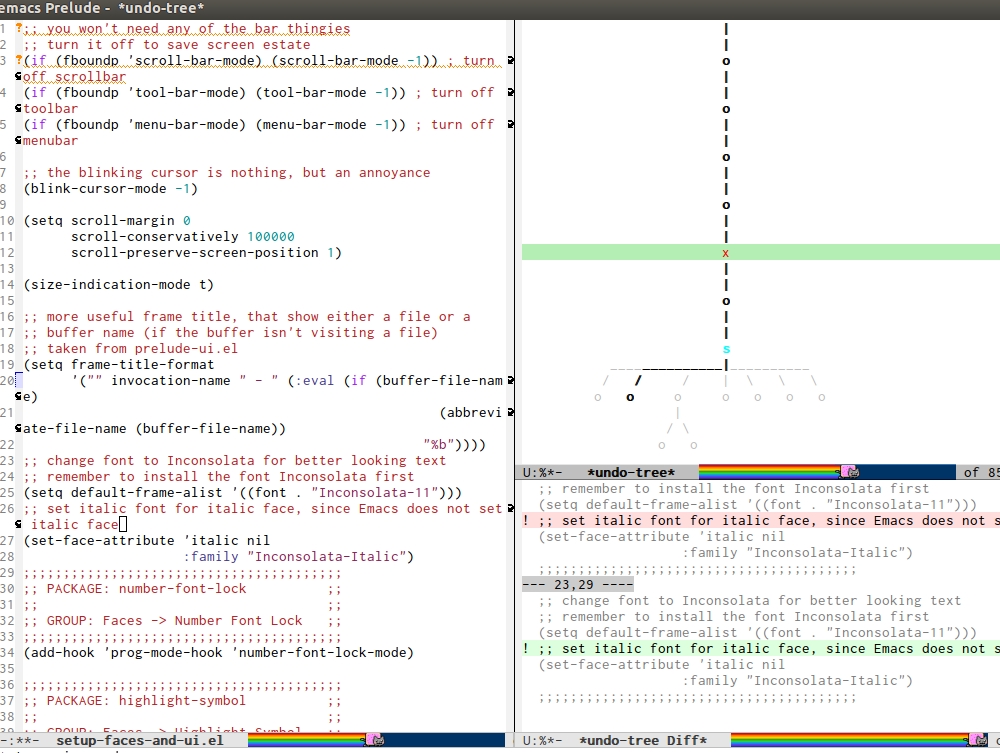

- Emacs list directory contents how to#
- Emacs list directory contents software#
- Emacs list directory contents code#
The most common and important shorthand that is used almost everywhere in Emacs is the C-x command. Important Keysīefore looking at some of the key commands of Emacs, first we will specify some terminology that is often used by Emacs users. This article provides a comprehensive overview of the commands that come along with Emacs. With loads of features with so many different functionalities tucked away beneath its simple-looking design, this clearly indicates the power and elegance of Emacs. Due to its versatility and swift performance, along with an extremely detailed documentation and an easy-to-use, user-friendly interface, Emacs has made quite the name for itself in the developer community. Because this is such a significant tool for developers, it is important to choose an editor that provides you with a good interface and with features that allow you to easily program and work efficiently.Įmacs is well known among developers as one of the top text editors. Hence, text editors are extremely lightweight and use much fewer resources than IDEs.įor many developers, a good text editor is all that is needed. These programs simply provide a platform where you can edit your code. Text editors do not care about any formatting or other elements of style required for writing.
Emacs list directory contents code#
They are specifically designed for editing the source code of programs and are often compared with Integrated Development Environments, a similar type of tool.
Emacs list directory contents software#
Text editors are software programs that allow users to write and edit text. The bmk_reload command reloads your bookmarks in case you add one in Emacs, and bmk_list lists your bookmarks and the directories they point to.Text editors are fundamental tools that have become immensely popular in the programming industry.

" This is why I chose " $" above to easily remember my bookmark key (and it usually isn't in a filename). Now if you have a bookmark named "proj_a_inc" you can do things like "cd $proj_a_inc" or "cp $proj_a_inc/foo.h. $bmk_file' alias bmk_list= "sort $bmk_file | awk 'BEGIN '"'" I have it writing out in both bash and csh compatible formats because I have to use tcsh at work (SIGH). (setq filename (file-name-directory filename))) (setq filename (cdr (assoc 'filename (cdr bmk))))) (setq filename (cdr (assoc 'filename (cadr bmk)))) "Convert bookmarks to format bash and tcsh (yuck!) can use." ( defadvice bookmark-write-file (after my-bookmark-to-shell activate) Let's have Emacs write the bookmarks out to a file as shell variables: Now that you're jumping around the file system in Emacs, you'll start to miss it in your terminal. It's somewhat annoying, but it's only a couple keystrokes, and I don't do it often enough to motivate me to try to fix it. I get around this by hitting " C-e", editing the path, then " RET" to go back to Ido. It has a quirk that after ido gets reseated in the new directory you can't navigate up, only down. Now when you are opening a file, you can type ' $', choose a bookmark, then ido will restart the find-file from that location. (define-key ido-file-dir-completion-map (kbd "$") 'my-ido-use-bookmark-dir) That's good for dired, but it would be nice to be able to use bookmarks to switch directories when you are doing a regular ido-find-file with " C-x C-f": I stole ' $' away from dired-hide-subdir, which I never use, because it's a mnemonic device as I'll explain later. Now in dired you press ' $' to choose a bookmarked directory to switch to. (add-hook 'dired-mode-hook 'my-ido-dired-mode-hook) (define-key dired-mode-map "$" 'my-ido-bookmark-jump)) ( let ((filename (bookmark-get-filename bmk))) (setq bookmark-alist (delete bmk bookmark-alist)) ( let* ((name (ido-completing-read "Use dir of bookmark: " (bookmark-all-names) nil t)) I like things in most recently used (MRU) order, so when we pick a bookmark we'll also move it to the top of the bookmark list: Now that we have Ido acting a bit more sensibly, let's use it to choose a bookmark in dired and switch to that directory (I am assuming here you already have Ido enabled). In the bookmark list you can rename, delete, etc. You set a bookmark using " C-x r m", and list your bookmarks using " C-x r l".
Emacs list directory contents how to#
This post isn't about how to use bookmarks in general, you can find that elsewhere. I set bookmarks in the dozen or so directories I use all the time, and a few others in strategic directories that I can start from and navigate down.

I work on projects with thousands of files in hundreds of directories so this is extremely useful to me. I don't use file bookmarks often, but if you set a bookmark while you're in a dired buffer it saves the directory location. You can use bookmarks to mark positions in files by name and jump back to them later.


 0 kommentar(er)
0 kommentar(er)
